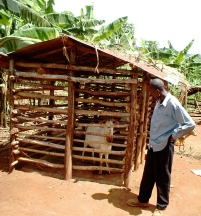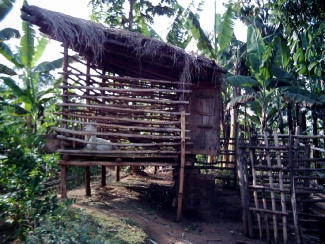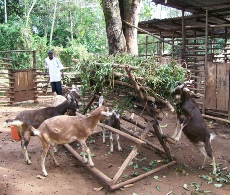
© 2012 -
This site does not use cookies

A house for the stud male
The high grade improver buck needs to be housed to keep it healthy. A raised floor would be ideal, but most villagers cannot afford to build or maintain a house with a raised floor and that is also strong enough for a big male. So the male ends up being tied in a corner and becomes aggressive through frustration and lack of exercise. It is better to have a simpler, ground level pen. There needs to be some shelter, at least over the highest piece of ground, so that it has somewhere to go in wet weather …diagram
Goat Houses

Low grade crosses
Low grade crosses (<50%) can be kept in the same was as local goats. They will do better with good housing, but this is not essential because they are fairly disease resistant and climate tolerant. The 50% crosses are productive enough that a their milk yield can be noticeably improved with good housing.



Raised floor houses
A good dairy goat will respond to improved management. For purebred goats and 75%
crosses, zero-
Note that the houses shown on the left include an exercise area, which is important for goats kept in small houses.
If bamboo is grown, it provides poles for the houses and goats can eat the leaves.


Feeding
Whatever the housing, it is very important that the fodder is kept off the ground and is clean and dry. This will greatly reduce problems of worms, and many other intestinal diseases


